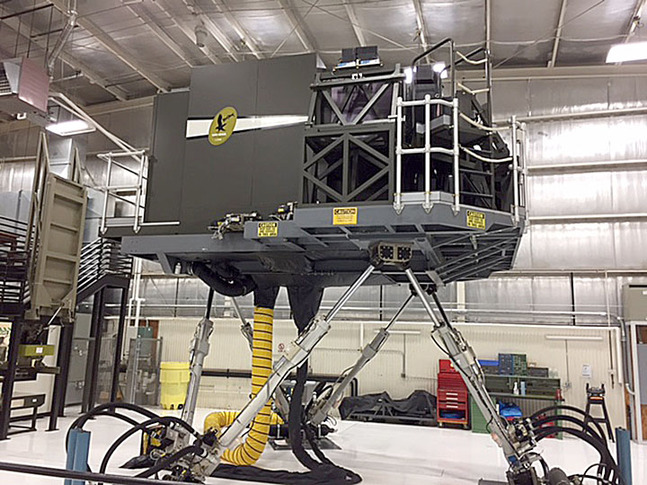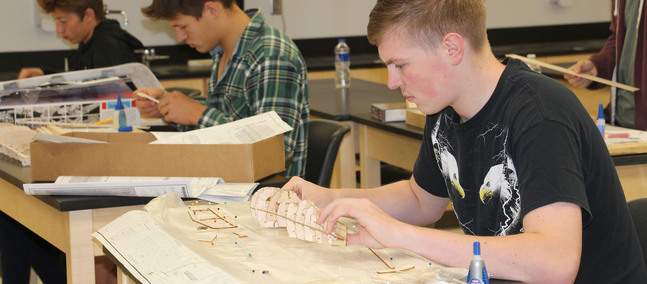'Once-in-a-lifetime' field trip
Posted on: Oct 13, 2017
A small group of Delano High School science students recently had the unique opportunity to visit Camp Ripley and fly a Blackhawk helicopter simulator, one of just a handful in the country, as part of their Aviation class.
They also examined several drones kept at the base, learned how they are operated, what they are used for, and more.
“The drones and other things were cool, but that simulator was definitely a once-in-a-lifetime opportunity for all of us,” said senior Patrick Eikmeier. “It was probably the best field trip I’ve ever taken.”
Class instructor Jason Monke said each one of the students had the opportunity to climb into the simulator’s cockpit and take the controls. The Delano class was only the second school group to receive that kind of access at Camp Ripley this year.
“I’d been looking for something like that to do,” said Monke. “They have flight simulators at the Mall of America, but that could get kind of spendy. So we were looking for something else but really hadn’t found anything.”
That’s where area National Guard recruiter John McCann came in. McCann arranged for the visit, and the trip took place on Monday, Oct. 2.
Studying aviation
The aviation course is a quarter-long elective that focuses on aviation history, basic knowledge about the control surfaces and parts of an airplane, and more. Students study the Wright Brothers, aces and planes of World War I and II, work on flight simulators installed on the media center computers, and watch videos about flight, tactics and more.
The primary project in the class requires each student to construct an intricate wood model of a World War II aircraft. Some of the models require 60 hours of time to build, while others require 35-45 hours. As a result, a number of students have been coming in before school or staying after to keep up.
“It’s a pretty hands-on, project-based type of class, for the most part,” said Monke. “This is an elective for science so it goes toward their graduation requirements if they want to take an extra class, but I’m just hoping to generate some interest in aviation and their understanding of aviation.”
Senior Steven Hajas selected one of the most complicated models, a B-24 bomber.
“This is a cool class,” he said. “I had talked to some of the other science teachers about what extra classes I could take, and they said I should take this one. We built the Delta Dart model in the first two weeks and that’s when I was like ‘Yep, this class is (great).’”
Career option
In recent years Monke has also hoped to spark interest in aviation as a career, or at least in obtaining a pilot’s license. Last year he had an airline pilot come in and address the class.
“They can go over to Buffalo and do their ground courses for only about $200, so it’s cheap at first,” said Monke. “That gets them entry-level, but then they have to start paying for flight time and instructors, and that’s when it starts to get expensive.”
Still, Monke said his Sun Country contact had invested about $30,000 in his career and was making more than $100,000 after a few years.
“For four years of college (in another area of study) you’re probably talking in the neighborhood of $100,000 in cost, and then maybe you get a job making $30,000 or $40,000,” he said. “When you look at it that way, spending $30,000 to get a job making over $100,000 sounds pretty good.”
Monke said at least one former student is currently pursuing a pilot’s license. Eikmeier he is considering joining the military, and that as a result of the class he would be open to looking into the aviation side of things.
“I’m not saying I could ever be a fighter pilot, but I’d fly around helicopters all day if they asked me to,” he said.

